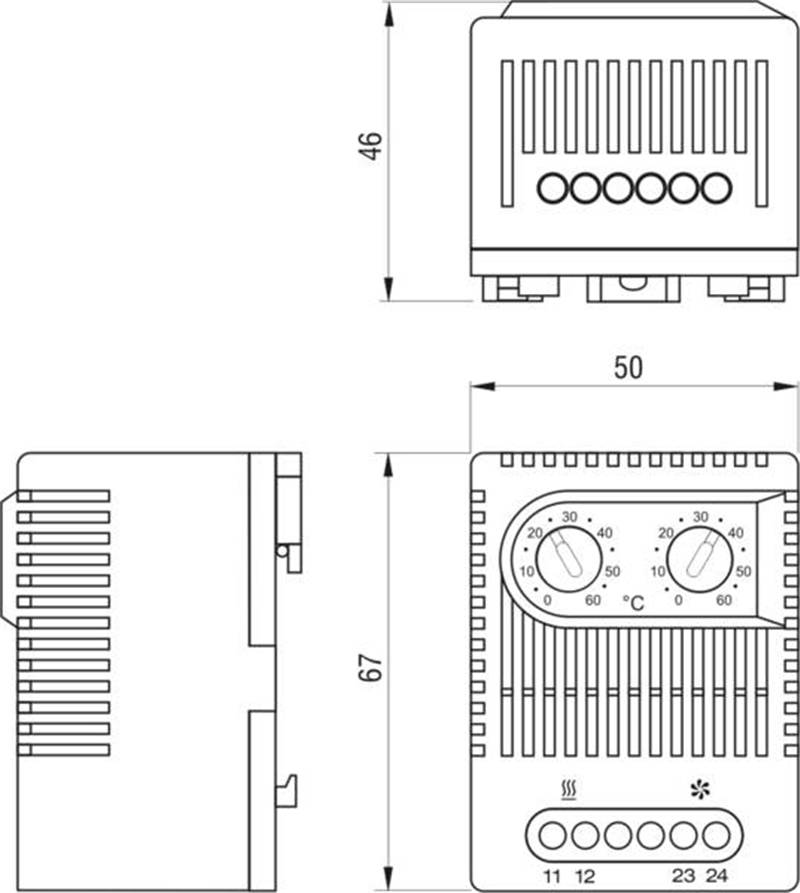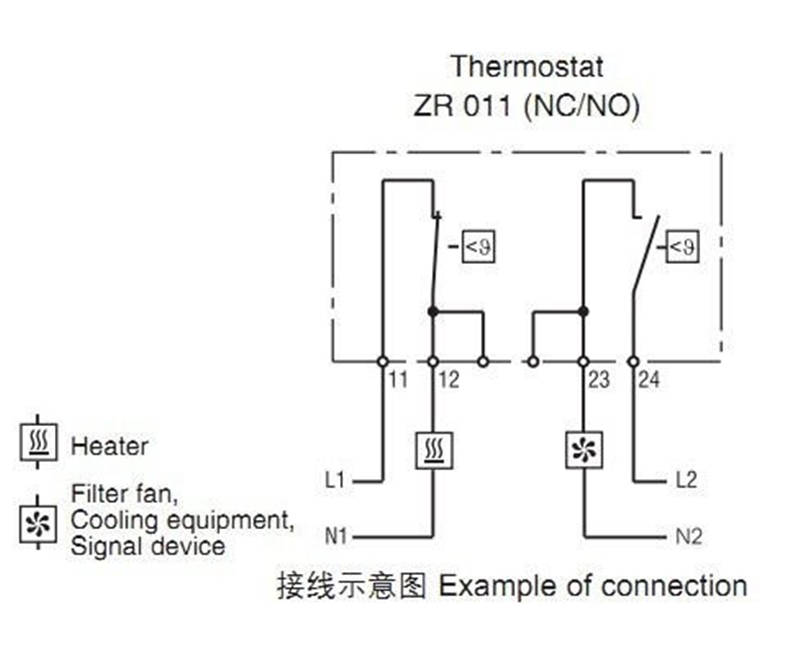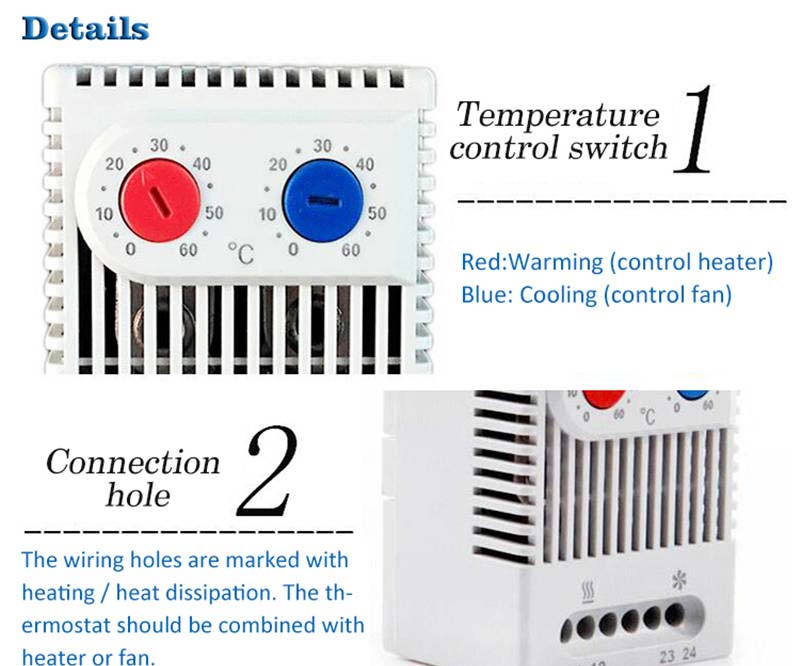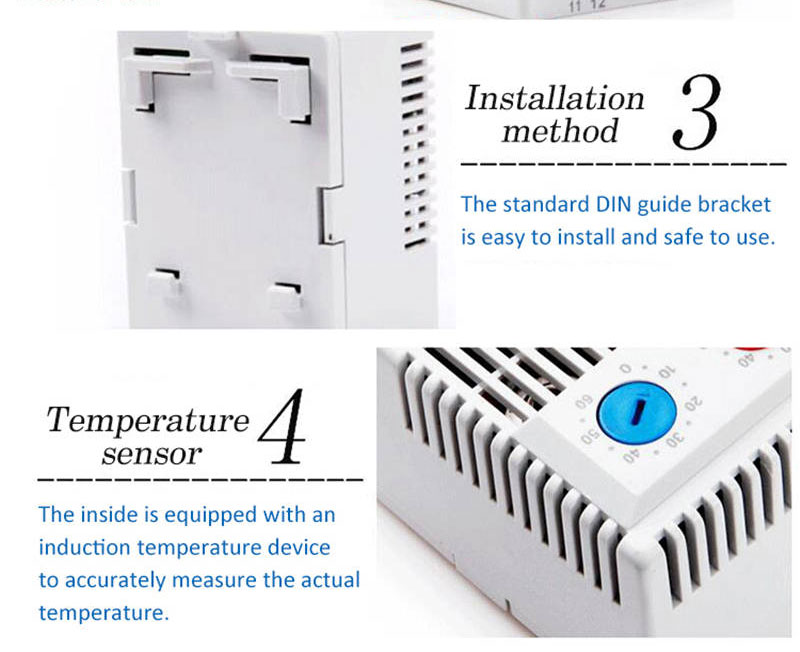
|
Switch temperature difference |
7K (± 4K tolerance) |
|
Sensor element |
thermostatic bimetal |
|
Contact type |
snap-action contact |
|
Service life |
> 100 000 cycles |
|
Max. switching capacity |
250VAC, 10 (2) A |
|
120VAC, 15 (2) A |
|
|
DC 30W |
|
|
Connection |
4-pole terminal, clamping torque 0.5Nm max.: rigid wire 2.5mm², stranded wire (with wire end ferrule) 1.5mm² |
|
Mounting |
clip for 35mm DIN rail, EN60715 |
|
Casing |
plastic according to UL94 V-0. light grey |
|
Dimensions |
67 x 50 x 46mm |
|
Weight |
approx. 90g |
|
Fitting position |
variable |
|
Operating/Storage temperature |
-45 to +80°C (-49 to +176°F) |
|
Operating / Storage humidity |
max. 90 % RH (non-condensing) |
|
Protection type |
IP20 |
|
Approvals |
CE |
|
Art. No. |
Setting range |
Setting range |
Setting range |
Setting range |
|
01172.0-00 |
contact breaker, normally closed |
0 to +60°C |
contact maker, normally open |
0 to +60°C |
|
01172.0-01 |
contact breaker, normally closed |
+32 to +140°F |
contact maker, normally open |
+32 to +140°F |
|
01175.0-00 |
contact breaker, normally closed |
-10 to +50°C |
contact maker, normally open |
+20 to +80°C |
|
01175.0-01 |
contact breaker, normally closed |
+14 to +122°F |
contact maker, normally open |
+68 to +176 °F |
|
01176.0-00* |
contact maker, normally open |
0 to +60°C |
contact maker, normally open |
0 to +60°C |
|
01176.0-01* |
contact maker, normally open |
+32 to +140°F |
contact maker, normally open |
+32 to +140°F |
|
*For regulating heat exchangers and fans (e.g LE 019) and as an alarm contact for monitoring the interior temperature of electronic enclosures. |
||||




GET A QUOTE